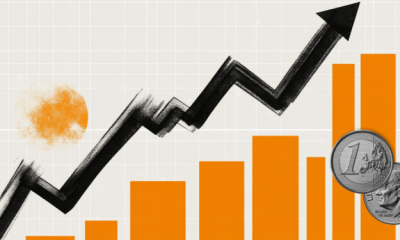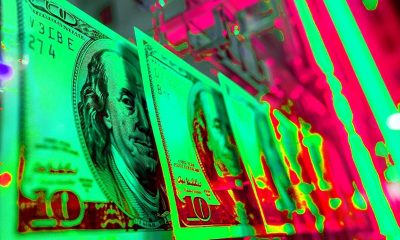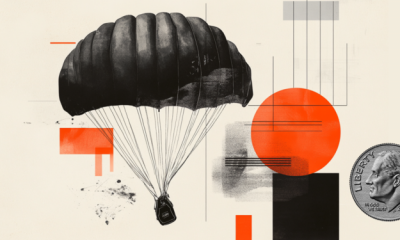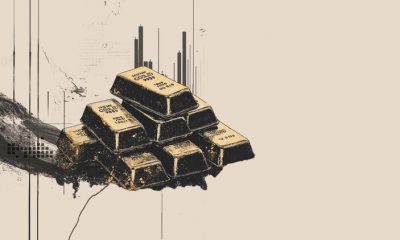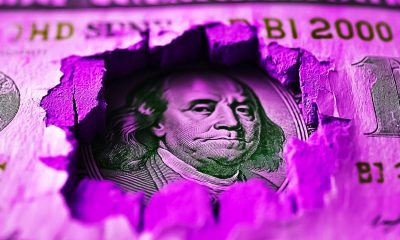

others
Pound Sterling recovers as UK’s resilient consumer spending drums up rate hike from BoE – Crypto News
- Pound Sterling faces pressure around 1.29 and drops swiftly despite UK Retail Sales data for June remaining stronger than expectations.
- United Kingdom’s consumer spending in June remained resilient despite the burden of high inflation.
- Monthly Retail Sales for June expanded by 0.7% while investors were expecting a mild expansion of 0.2%.
The pound sterling (GBP) delivers a solid recovery near 1.2820 as the United Kingdom Retail Sales data turned out more resilient than expected. The GBP/USD pair rebounds swiftly as consumer spending growth expanded strongly in June. Monthly Retail Sales in June expanded by 0.7% vs. expectations of 0.2%. Annual consumer spending data contracted by 1.0% against the consensus of -1.5%.
The United Kingdom’s consumer spending remained resilient in June despite the burden of higher inflation and interest rates by the Bank of England (BoE). Upbeat retail demand has offset the optimism inspired by soft inflation data for June as higher consumer spending could allow firms to raise the prices of goods and services at factory gates again. Also, consumer spending resilience might elevate hopes of a consecutive 50-basis-point (bp) interest rate hike by the UK central bank.
Daily Digest Market Movers: Pound Sterling finds strength as risk-off mood eases
- Pound Sterling recovers quickly as the United Kingdom Retail Sales data for June was stronger than anticipated.
- Monthly Retail Sales data expanded by 0.7% in June vs. 0.1% in May and the consensus is 0.2%. Annual Retail Sales data contracted by 1.0% against the expectations of -1.5% and earlier release of -2.1%.
- Retail Sales excluding fuel posted growth of 0.8% against a stagnant performance recorded for May and the estimates of 0.1% on a monthly basis. Annualized economic data contracted by 0.9% vs. the consensus of -1.6% and the earlier release of -1.9%.
- Resilience in consumer spending could offset the impact of June’s soft Consumer Price Index (CPI) data and reinforce the odds of a 50 bps rate hike from the Bank of England.
- Investors were mixed about the pace at which interest rates will be hiked by the Bank of England on August 3.
- Market participants were anticipating that BoE Governor Andrew Bailey would raise interest rates consecutively by 50 basis points (bps) but as June’s inflation cools down significantly a league of investors are tilting toward a 25 bps rate hike.
- The investing community expects that interest rates by the BoE would peak around 6.5%.
- BoE Deputy Governor Dave Ramsden acknowledged that inflation has begun to fall significantly in the UK but noted that it was still “much too high,” per Reuters.
- Market participants seem confident that UK inflation has started cooling down as aggressive policy tightening by the BoE and a decline in the Producer Price Index (PPI) are collectively attacking price pressures.
- According to a survey from Lloyds Bank, producers have cut prices for the first time in more than three years and are passing on the benefit of the decline in cost pressures to end consumers.
- Next week, investors will shift their focus to the S&P Manufacturing & Services PMI for June, which will be published on Monday at 08:30 GMT.
- The overall market mood is quite cautious as the second-quarter earnings season has kicked off.
- Meanwhile, the US Dollar Index (DXY) is gathering strength to capture crucial resistance of 101.00.
- The US Dollar Index has come back into action as consumer spending has maintained growth and core inflation could a while in returning to 2%.
- Investors are keenly awaiting the interest rate decision by the Federal Reserve (Fed), which will be announced on July 26.
- As per the CME FedWatch tool, interest rates would be hiked by 25 bps to 5.25-5.50%. Investors are hoping that this would be the last interest rate hike this year.
Technical Analysis: Pound Sterling picks up strength above 1.2800
Pound Sterling has rebounded sharply from 1.2820 as the UK Retail Sales expand significantly higher than expectations. and the US Dollar Index has faced resistance above 101.00 The Cable found support at the 20-day Exponential Moving Average (EMA) at 1.2860, which indicates that the short-term bullish bias is still intact. Momentum oscillators indicate that the upside momentum has faded but remains mostly still intact.
BoE FAQs
The Bank of England (BoE) decides monetary policy for the United Kingdom. Its primary goal is to achieve ‘price stability’, or a steady inflation rate of 2%. Its tool for achieving this is through the adjustment of base lending rates. The BoE sets the rate at which it lends to commercial banks and banks lend to each other, determining the level of interest rates in the economy overall. This also impacts the value of the Pound Sterling (GBP).
When inflation is above the Bank of England’s target it responds by raising interest rates, making it more expensive for people and businesses to access credit. This is positive for the Pound Sterling because higher interest rates make the UK a more attractive place for global investors to park their money. When inflation falls below target, it is a sign economic growth is slowing, and the BoE will consider lowering interest rates to cheapen credit in the hope businesses will borrow to invest in growth-generating projects – a negative for the Pound Sterling.
In extreme situations, the Bank of England can enact a policy called Quantitative Easing (QE). QE is the process by which the BoE substantially increases the flow of credit in a stuck financial system. QE is a last resort policy when lowering interest rates will not achieve the necessary result. The process of QE involves the BoE printing money to buy assets – usually government or AAA-rated corporate bonds – from banks and other financial institutions. QE usually results in a weaker Pound Sterling.
Quantitative tightening (QT) is the reverse of QE, enacted when the economy is strengthening and inflation starts rising. Whilst in QE the Bank of England (BoE) purchases government and corporate bonds from financial institutions to encourage them to lend; in QT, the BoE stops buying more bonds, and stops reinvesting the principal maturing on the bonds it already holds. It is usually positive for the Pound Sterling.
-

 Technology6 days ago
Technology6 days agoBest 5G phones under ₹10,000 in July 2025: Infinix Hot 60, Samsung M06 and more – Crypto News
-
Cryptocurrency1 week ago
Scaling the Future: Bitcoin.ℏ’s 10,000 TPS Advantage with Hedera Hashgraph – Crypto News
-

 Cryptocurrency1 week ago
Cryptocurrency1 week agoETH to Lead BTC Over Next 6 Months, Says Galaxy CEO – Crypto News
-
Technology1 week ago
Why is Shiba Inu Price Up Today? – Crypto News
-
others6 days ago
Japan CFTC JPY NC Net Positions rose from previous ¥103.6K to ¥106.6K – Crypto News
-

 Blockchain5 days ago
Blockchain5 days agoTether Gold (XAUt) Market Cap Soars as Gold Hits Record Highs in 2025 – Crypto News
-

 others1 week ago
others1 week agoArthur Hayes-Backed Altcoin Outpaces Crypto Market Amid Launch of New Partnership With Anchorage Digital – Crypto News
-

 Cryptocurrency1 week ago
Cryptocurrency1 week agoETH to Lead BTC Over Next 6 Months, Says Galaxy CEO – Crypto News
-

 De-fi1 week ago
De-fi1 week agoStablecoin Flows are Directly Impacting Treasury Yields: Messari – Crypto News
-

 Cryptocurrency1 week ago
Cryptocurrency1 week agoBitcoin Cash up 7% as bulls defy BTC dump, eye gains on rising volume – Crypto News
-

 others1 week ago
others1 week agoUS Dollar finds support amid Fed uncertainty and tariff talks – Crypto News
-

 Technology1 week ago
Technology1 week ago‘Screwed up’: Sam Altman warns against using ChatGPT as your lawyer or therapist – Crypto News
-

 Technology5 days ago
Technology5 days agoWho is Shengjia Zhao? ChatGPT co-creator named Chief Scientist at Meta’s Superintelligence Labs – Crypto News
-
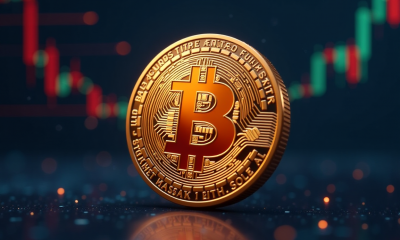
 Cryptocurrency5 days ago
Cryptocurrency5 days agoMarket update: Bitcoin rises after US-EU announce framework trade agreement – Crypto News
-
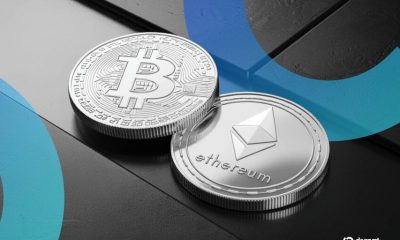
 Cryptocurrency5 days ago
Cryptocurrency5 days agoBitcoin and Ethereum ETFs Pull in Record-High $11.2 Billion in July – Crypto News
-
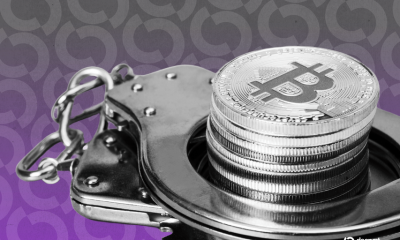
 Cryptocurrency1 week ago
Cryptocurrency1 week agoDenver Pastor, Wife Indicted in Alleged $3.4 Million Crypto Scam – Crypto News
-
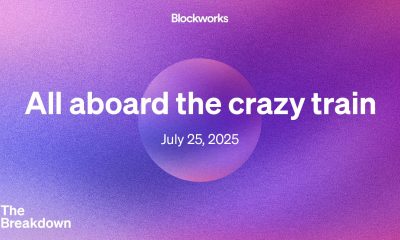
 Cryptocurrency1 week ago
Cryptocurrency1 week agoFriday charts: Crazy train investing – Crypto News
-

 De-fi1 week ago
De-fi1 week agoWindtree Therapeutics Plans $520 Million Raise, 99% for BNB, Secures $500M Equity Line, Uses Kraken Custody – Crypto News
-
Business1 week ago
Buy DexScreener Reactions – Boost Legends: Guide + $5 Bonus – Crypto News
-

 De-fi5 days ago
De-fi5 days agoETH Unstaking Queue Hits Record High, Led by Justin Sun-Linked Addresses – Crypto News
-
others5 days ago
‘Sit Tight With Bitcoin’ Robert Kiyosaki Predicts Great Depression 2.0 – Crypto News
-
Business5 days ago
Ethereum Breaks $3,900 as SharpLink Makes Another $295M ETH Purchase – Crypto News
-
Business5 days ago
Breaking: US SEC Delays Launch Of Truth Social’s Bitcoin ETF And Grayscale’s Solana ETF – Crypto News
-
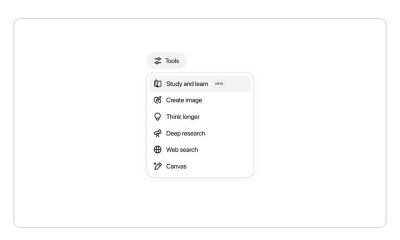
 Metaverse3 days ago
Metaverse3 days agoOpenAI rolls out ‘Study Mode’ in ChatGPT: What is it? How to use? All your questions answered… – Crypto News
-
Business1 week ago
Why is PENGU Price up today? – Crypto News
-
Business1 week ago
Crypto Market Crashes Amid Trump’s Threat to Increase Tariffs – Crypto News
-

 Blockchain1 week ago
Blockchain1 week agoBNY, Goldman Launch Blockchain Solution – Crypto News
-

 De-fi1 week ago
De-fi1 week agoGoldman Sachs, BNY to Launch Tokenized Money Market Fund – Crypto News
-

 Metaverse1 week ago
Metaverse1 week agoHow AI can weave a future for Kashmir’s centuries old carpet industry – Crypto News
-

 Cryptocurrency1 week ago
Cryptocurrency1 week agoTea App That Claimed to Protect Women Exposes 72,000 IDs in Epic Security Fail – Crypto News
-

 Cryptocurrency5 days ago
Cryptocurrency5 days agoZK breakthroughs, onchain comebacks and stablecoin shakeups – Crypto News
-
Technology5 days ago
Solayer Launches USDC-Powered Hotel Booking Platform To Give Crypto Travel a Boost – Crypto News
-

 Technology3 days ago
Technology3 days agoSpotify hits 276M subscribers and strong user growth in Q2, but revenue and profit fall short of targets – Crypto News
-

 others1 week ago
others1 week agoUSD/INR refreshes monthly high on relentless FIIs sell-off in Indian equities – Crypto News
-

 Technology6 days ago
Technology6 days agoIndias startup wave merges AI with tradition for smarter daily solutions – Crypto News
-
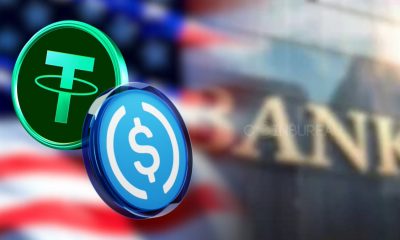
 De-fi6 days ago
De-fi6 days agoBank of America Says U.S. Lenders Ready Stablecoin Launches – Crypto News
-
Technology5 days ago
Just In: $111B Brokerage Giant Interactive Brokers Explores Stablecoin for Funding – Crypto News
-

 others4 days ago
others4 days agoEUR/USD dives as the US Dollar outperforms with all eyes on the Fed decision – Crypto News
-
others4 days ago
Breaking: PayPal to Let Merchants Accept Payments in Over 100 Cryptocurrencies – Crypto News
-
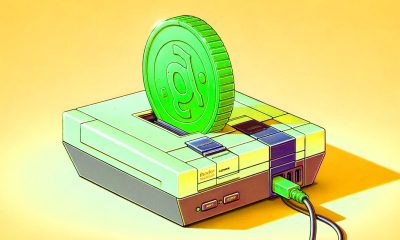
 others3 days ago
others3 days agoBlockchain Gaming Is Growing Up – What’s Behind the Sector’s Quiet Comeback – Crypto News
-
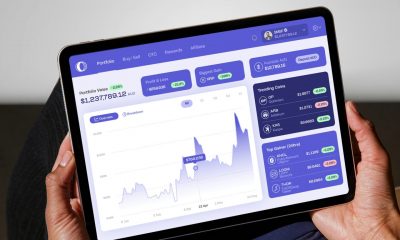
 Technology3 days ago
Technology3 days agoCoinbase exchange targets alleged cybersquatter in lawsuit – Crypto News
-
Business3 days ago
Stablecoins Won’t Boost Treasury Demand, Peter Schiff Warns – Crypto News
-

 Technology3 days ago
Technology3 days agoIs AI causing tech worker layoffs? Thats what CEOs suggest, but the reality is complicated – Crypto News
-

 Blockchain2 days ago
Blockchain2 days agoSEC Crypto ETFs Ruling Brings Structural Fix, Not Retail Shakeup – Crypto News
-
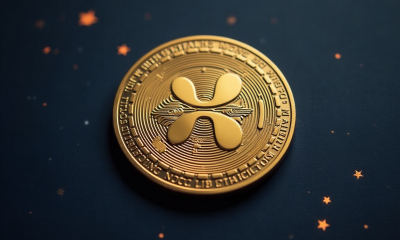
 Cryptocurrency1 day ago
Cryptocurrency1 day agoXRP inflows drop 95% since July spike, while Chaikin data signals possible rally – Crypto News
-
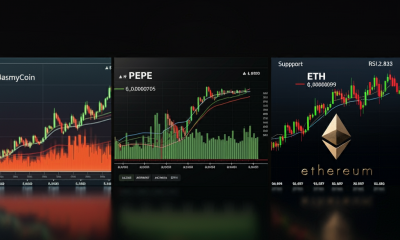
 Cryptocurrency1 week ago
Cryptocurrency1 week agoHow to Invest in Cryptocurrency In India – Crypto News
-
Business1 week ago
Breaking: White House To Release Crypto Policy Report On July 30 – Crypto News
-
others1 week ago
Court Approves $1.9B Reserve Release, Enabling Next FTX Distribution – Crypto News
-
Business1 week ago
Elon Musk’s Tesla Reports $284 Million Gain On Bitcoin Holdings – Crypto News
-
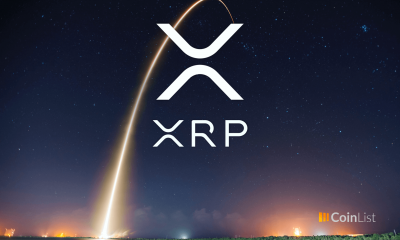
 Cryptocurrency1 week ago
Cryptocurrency1 week agoNasdaq-listed Wellgistics Health adopts XRP Ledger for real-time payments – Crypto News



